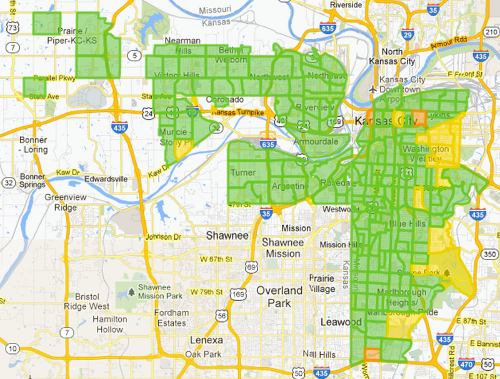I’d like broadband speeds of 1 Gigabit per second. I suspect you’d like 1 Gbps. And it turns out large parts of Kansas City would definitely like 1 Gbps.
The difference, sadly for you and I (KC residents excepted), is that we’re not getting it any time soon while the folks of Kansas City will.
Six weeks ago Google confirmed the details of its plans to bring ultra-fast broadband to the area, chosen after a national search for likely sites. While Google didn’t reveal the precise details for its choice, it’s likely it was the perfect blend of somewhere big enough to have a lot of people (many of them tech lovers), but small enough that there’s some disappointment with existing local provision.
When launching the service, Google carved the area up into 202 small “fiberhoods” and invited locals to pre-register, paying a $10 deposit to prove their interest. The plan was that any fiberhood that got a certain proportion of its residents to sign up would get the service, with the areas of highest demand being first in line.
The pre-registration period has now ended and at least 180 of the 202 areas have met the threshold; the final figure might be higher once late registrations are tallied. The 180 fiberhoods cover every school in the area.
While Google isn’t revealing the precise threshold, it doesn’t seem to be in its interest to set it low for the sake of publicity: the idea was to find the places where installation was economically viable.
Those in the areas that said yes will eventually get a choice of three packages: $70 for 1Gbps plus equipment supporting 360Mbps wireless; $120 for the broadband plus a cable TV package and a free Nexus tablet; or a guaranteed 5 Mbps service for the next seven years for no monthly fee. The people who go for the free deal must pay a one-off $300 installation fee, while those on the high-speed deals can waive the fee if they sign up to a minimum two-years’ service.
Google will announce the full list of qualifying areas on Thursday, along with the order of construction and possible a timetables. It’s not yet clear if the company will literally wire up each area in order of interest, or if it will figure out a more practical schedule that favors adjacent areas.

